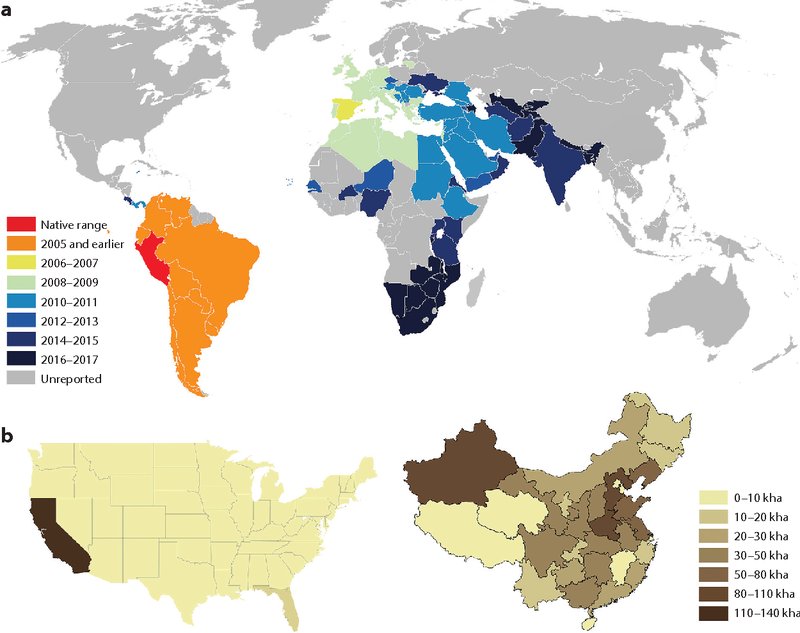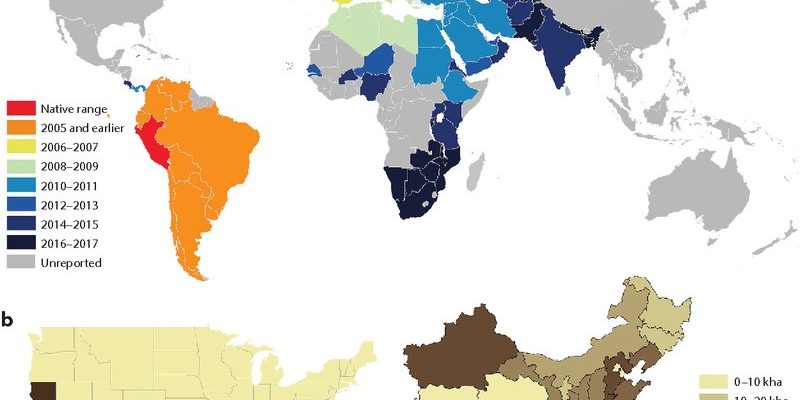
When you think of pinworms, you might picture them lurking in one specific corner of the world, but the reality is much broader. These pesky parasites have made themselves at home across many countries, particularly where sanitation practices might be less stringent. Understanding their global footprint isn’t just a curiosity; it’s a critical part of public health awareness and helps in designing effective health interventions.
What Are Pinworms?
Pinworms, scientifically known as *Enterobius vermicularis*, are small, thin, white worms. They typically measure about one inch long. These worms prefer to make a cozy home in the intestines, often causing discomfort in their human hosts without them even realizing it at first.
When night falls, female pinworms venture out of the anus to lay their eggs in the surrounding skin. This nocturnal activity not only causes itching but also spreads their eggs into the environment. You might be wondering how these eggs make their way into other people’s bodies. It’s simple: they can easily get on hands, bedding, clothing, and even in the air.
Pinworm infections are most common in children, as they frequently play together and may not have perfect hygiene practices. But the reality is that anyone can get them, making awareness essential for everyone—parents and caregivers especially.
Geographic Distribution of Pinworms
Pinworms are virtually found all over the world. They thrive in places where hygiene practices might not be as meticulous. Regions with high populations of children, such as schools and daycare centers, are common hotspots for pinworm transmission.
In developed countries, they’re often found in crowded living situations or in places where access to clean bathrooms can be a challenge. On the other hand, in developing nations, pinworms can be even more prevalent due to a lack of resources and education about hygiene. For instance, parts of Africa and Southeast Asia report higher instances of pinworm infections, often linked to socioeconomic conditions.
While pinworms don’t discriminate on location, their ability to spread can be curtailed by focusing on sanitation. Cleanliness and proper hygiene practices are key to preventing outbreaks in communities.
Transmission and Life Cycle
Understanding how pinworms spread is crucial for controlling their population. The pinworm life cycle begins when a person ingests their eggs—perhaps after touching contaminated surfaces or food. Once ingested, the eggs hatch in the intestines, and the immature worms grow into adults.
Here’s the fun part (or maybe not so fun): after mating, the adult females make their nightly journey out of the body to lay hundreds of eggs. This cycle can lead to rapid reinfection, especially if proper hygiene isn’t practiced. The key takeaway here is that pinworms can spread like wildfire in close-knit environments, such as homes, classrooms, and daycare centers.
To break this cycle, good hygiene is paramount. Regular handwashing, especially after using the bathroom and before eating, can drastically cut down the risk of infection.
Symptoms and Diagnosis of Pinworm Infection
Many people with pinworm infections don’t notice anything unusual at first. However, the most common symptom is intense itching around the anus, especially at night. This can disrupt sleep and lead to restlessness. Sometimes, people might also experience irritability, difficulty concentrating, or even secondary infections from scratching.
If you suspect a pinworm infection, diagnosing it is relatively straightforward. The “tape test” is a common method doctors use. Essentially, you take a piece of clear tape and press it against the area around the anus first thing in the morning. This captures any eggs that may have been laid overnight. The tape is then examined under a microscope for confirmation.
It’s important to consult a healthcare professional if you notice symptoms. Early diagnosis means quicker treatment, which is key to preventing further spread in families or communities.
Treatment Options for Pinworm Infection
Treating a pinworm infection is usually straightforward and effective. There are several medications available, such as mebendazole and albendazole, that can effectively eliminate the worms. These treatments work by preventing the worms from absorbing sugars, leading to their demise.
In addition to medication, it’s crucial to take a multi-pronged approach to treatment. Along with taking the prescribed medication, washing all bedding, clothing, and towels in hot water can help remove any stray eggs. This can be a little tedious but is important in preventing reinfection.
Here’s a pro tip: since reinfection can happen easily, it’s often recommended that the whole household be treated at the same time, even if only one person shows symptoms. That way, everyone can be on the same path to recovery.
Preventing Pinworm Infections
Prevention is always better than cure, especially with pinworms. To ward off these unwelcome guests, good hygiene practices are critical. Here are some effective strategies to keep pinworms at bay:
- Wash hands frequently: Especially after using the bathroom or changing diapers.
- Keep nails short: This helps reduce the chance of eggs getting caught under nails.
- Change and wash bedding regularly: Regular laundering at high temperatures can eliminate any lingering eggs.
- Avoid scratching: This may seem tough with the itchiness, but minimizing scratching can help prevent spreading eggs.
Educating families, especially in areas with higher infection rates, is essential. Schools and community health programs can play a huge role in spreading awareness about pinworm hygiene practices and how to manage any infections that do occur.
Overall, understanding the documented range and distribution of pinworms is crucial for managing and preventing these infections. Though they may be tiny and often overlooked, pinworms can cause real discomfort and disruption in people’s lives. By promoting good hygiene practices and fostering awareness, we can significantly reduce the incidence of pinworm infections.
So, whether you’re a parent, teacher, or simply someone who wants to learn more, knowing about pinworms, their habits, and their preferred habitats can arm you with the tools to prevent their pesky takeover. Keeping clean and informed is your best defense!

